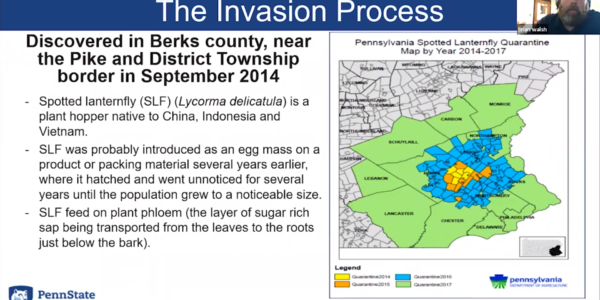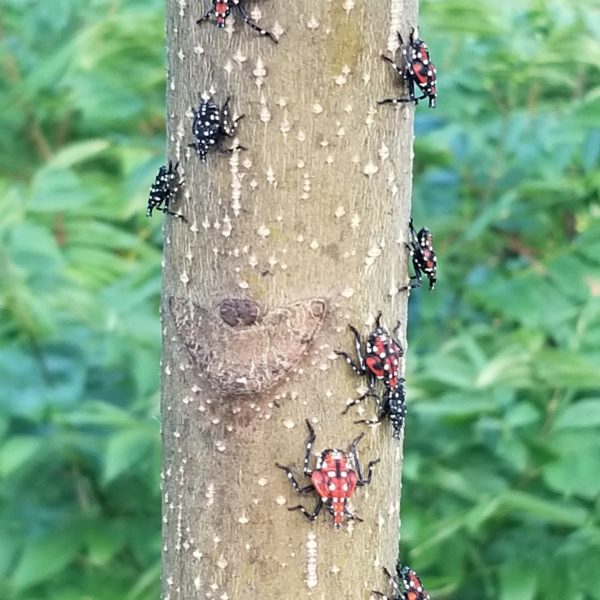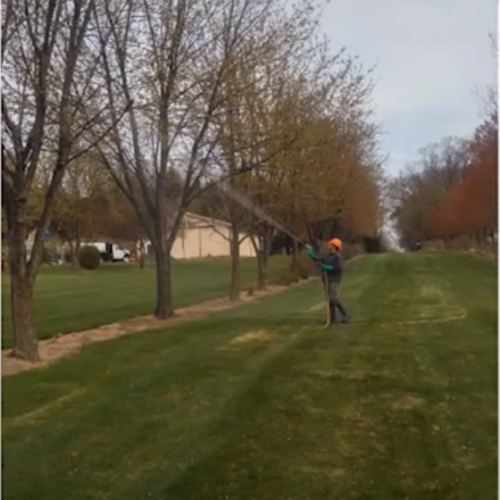Spotted lanternfly (Lycorma delicatula, “SLF”) remains a pest of great concern for the northeast, Mid-Atlantic, and the entire United States. Since first being discovered in Berks County, PA in 2014 it has spread to 11 states and been found in at least four others.
Scientists are constantly researching SLF to learn as much as they can about how to control this insect and prevent its spread. A recent presentation by Brain Walsh from Penn State Extension highlights some of the biggest finds going into the 2022 season.

The insect is much more mobile than originally thought when first found in the US. It can glide to reach new host plants, and is an incredibly adept hitchhiker; the eggs can be laid on almost any flat surface, and the nymphs and adults are small enough to easily be driven and shipped across state lines. The satellite infestations outside of the Pennsylvania/New Jersey area all established by accidental introduction facilitated by human means. However, given how rapidly the infestation has spread since first being discovered, Pennsylvania has moved towards a strategy of control and mitigation, rather than eradication, which no longer seems realistic. Spotted lanternfly is here to stay.
Adult SLF greatly favor tree of heaven, its main host plant. However, if tree of heaven is not present in an area, they will feed on other host plants including maple, black walnut, cherry, and grapes. Studies in Pennsylvania have shown that, in parking lots without tree of heaven but with a wide variety of cultivated trees, adults vastly prefer maple trees over crab apple, honey locust, linden, pear, or sycamore.
At most recent count, SLF has over 100 host plants. In the early instar stages, SLF prefers soft and succulent plants or the leaves of trees, since its smaller proboscis can’t pierce the bark of trees yet.
-
Look for nymphs on plants such as:
- Grapevines
- Apple trees
- Maple (especially red and sugar maple),
- Oak
- Black walnut,
- Hops
- Rose
- Basil
- Blueberry
- Cherry
- Pear
- Common garden fruits and vegetables including squash and cucumber

Fortunately, there is less plant death seen in the field than originally predicted or feared. Plant mortality remains high for tree of heaven, but there are still concerns for grape growers and the wine industry; many vineyards have lost large numbers of grape vines due to SLF.
A lot of research has gone into finding a viable and affordable control for the egg masses. Since the insect as a nymph and adult is highly mobile, finding a way to eliminate the stationary egg masses during the winter and spring months would provide the most effective control. 50% Golden Oil (which is sometimes used for treating spongy moth eggs), 5% and 3% Pure Oils, and soap-based ovicides have all been tested for effectiveness in egg control. So far, trials are inconclusive, with some products showing some outlier test results of 0% hatch rate on treated eggs and others showing 100% hatch rate. So far, “up to 70% control of egg masses” appears to be the best consensus on ovicide controls.

In addition to chemical controls of SLF, there is always a question of biocontrols, such as predators that would recognize and target SLF as potential prey. Studies from the field in Pennsylvania show evidence of wheel bugs or assassin bugs laying their eggs in clusters near SLF egg masses, so the freshly-hatched assassin bug nymphs have an immediate food source. As with most observed biocontrols, this has not occurred at high enough levels yet to serve as a reliable population control, but it may point to some native species learning to recognize SLF as a potential food source.
As for solutions currently on the market, Arborjet has you covered with two injectable formulations: ACE-jet and IMA-jet, injectable and systemic solutions that have shown to reduce the effects of spotted lanternfly and subsequent honeydew buildup and sooty mold growth. You can learn more at our website.
